
Getting ready for Winter
SEO Space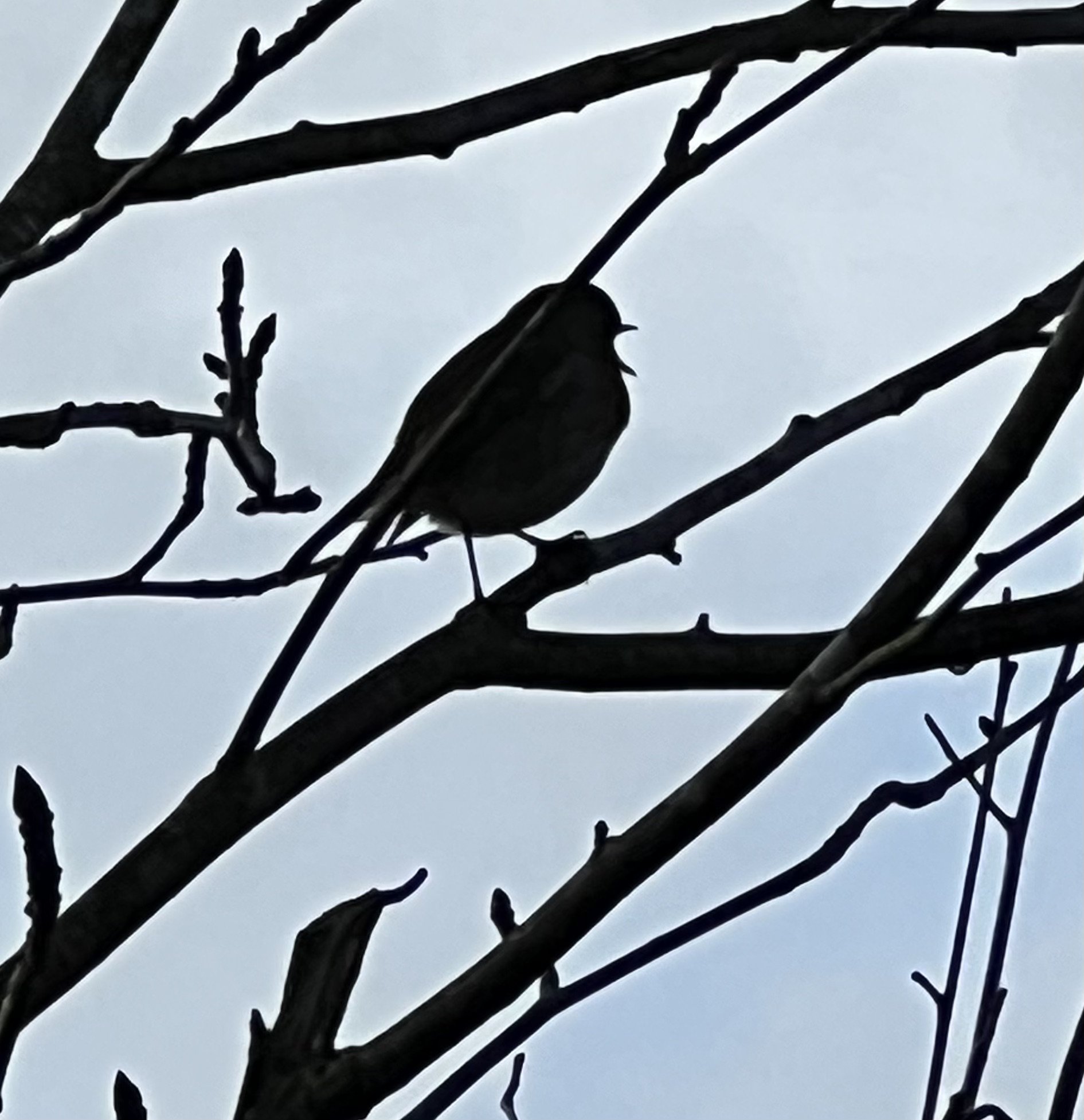
A young robin sings in a whitebeam as I work below him
After a long autumn of above-average temperatures, we have been shrouded in damp, cold fog for several days. I’d rather forgotten what foggy days were like but in my school days, when my family lived in a remote Devon village and the school bus was the only route to school, they held the potential for early release. On foggy days we watched from the classroom as the fog descended and willed it to hide the far goal posts. When that happened, a senior would walk through the classrooms announcing: ‘School buses will leave in 15 minutes; country children may go’. I wonder how the town children felt as we crashed down our desks lids; grabbed our satchels and fled noisily down the corridors with all the glee of escaping prisoners.
For the last few weeks I’ve been trying to get the garden ready for its winter rest – although there’s never much of a dormant period as early hellebores are already in flower and sarcococca about to start scenting the air. A young robin follows me round and I love his creamy song as I potter.
There are always jobs that need to be done … and a few that never seem to be completed! I have not yet finished planting the purple and orange tulips that I bought to complement the geums and alliums in the new border by the wildflower meadow. I am happy to say that I am in good company as Ann-Marie Powell confided that she was in the same boat. However, all is not lost as tulips will tolerate late planting and stand less chance of getting fire blight than earlier planted bulbs.
I have taken advantage of the mild autumn and sown my broad bean seeds – some in boxes for our stand at Chelsea and some in our raised steel beds. Varieties such as Aquadulce come through the winter well; get away to an early start and seem to be more immune to chocolate spot than later plantings. Without the luxury of a greenhouse and heated benches, I shall leave the rest of the planting until the days are longer and the soil a little warmer; the seedlings will soon catch up with overwintered plantings.
The bed where the lovely Iris Ensata ‘Purple Parasol’ puts on its summer display has been cut back and mulched. The irises thrive in this very wet area – the gravel paths are almost submerged after heavy rain – but the great surprise is that self-seeded ammi majus come through the winter both in the beds and in the gravel surrounding them (to be transplanted in the spring); verbena bonariensis, too, has shown itself hardy in these borders.
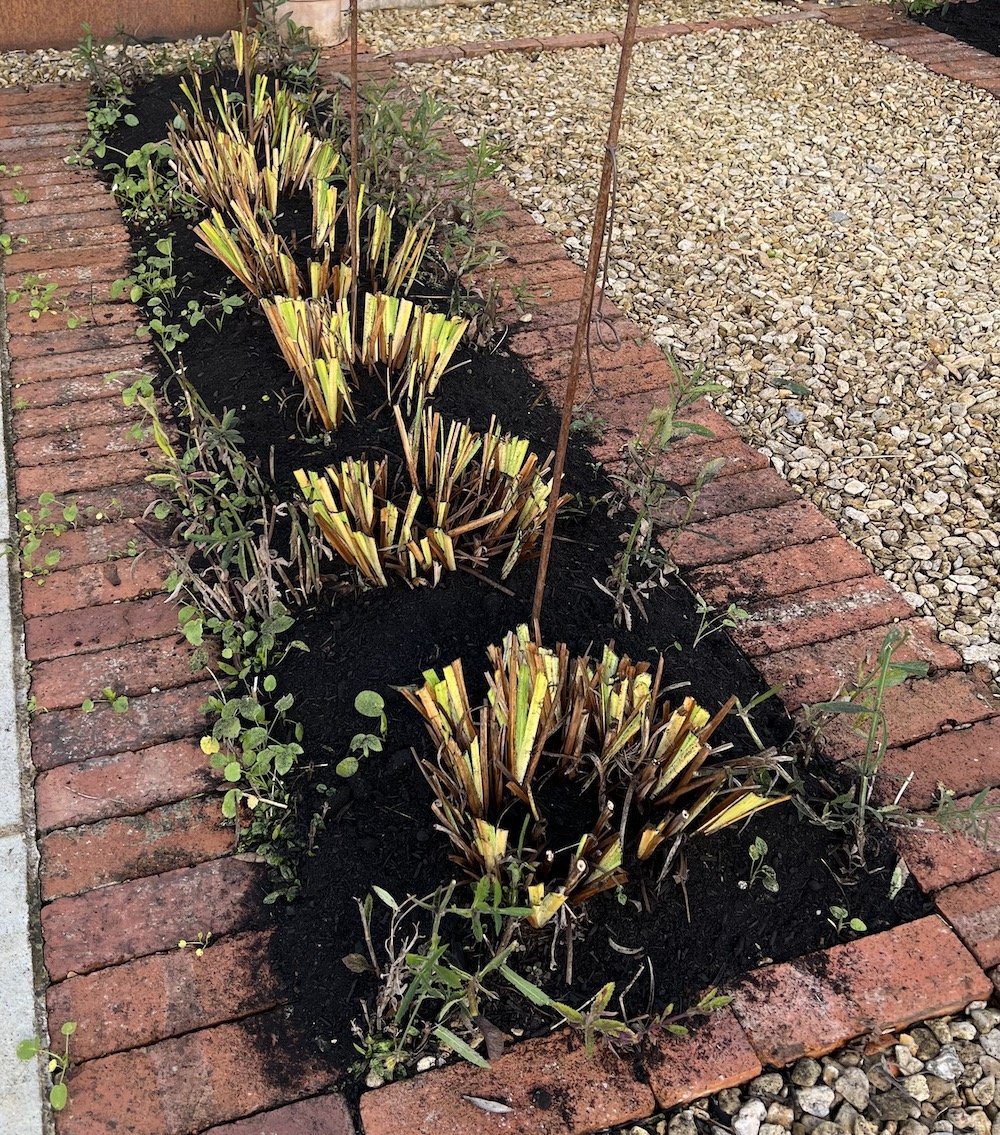
The Iris Ensata bed contains ammi majus seedlings that will flower next year
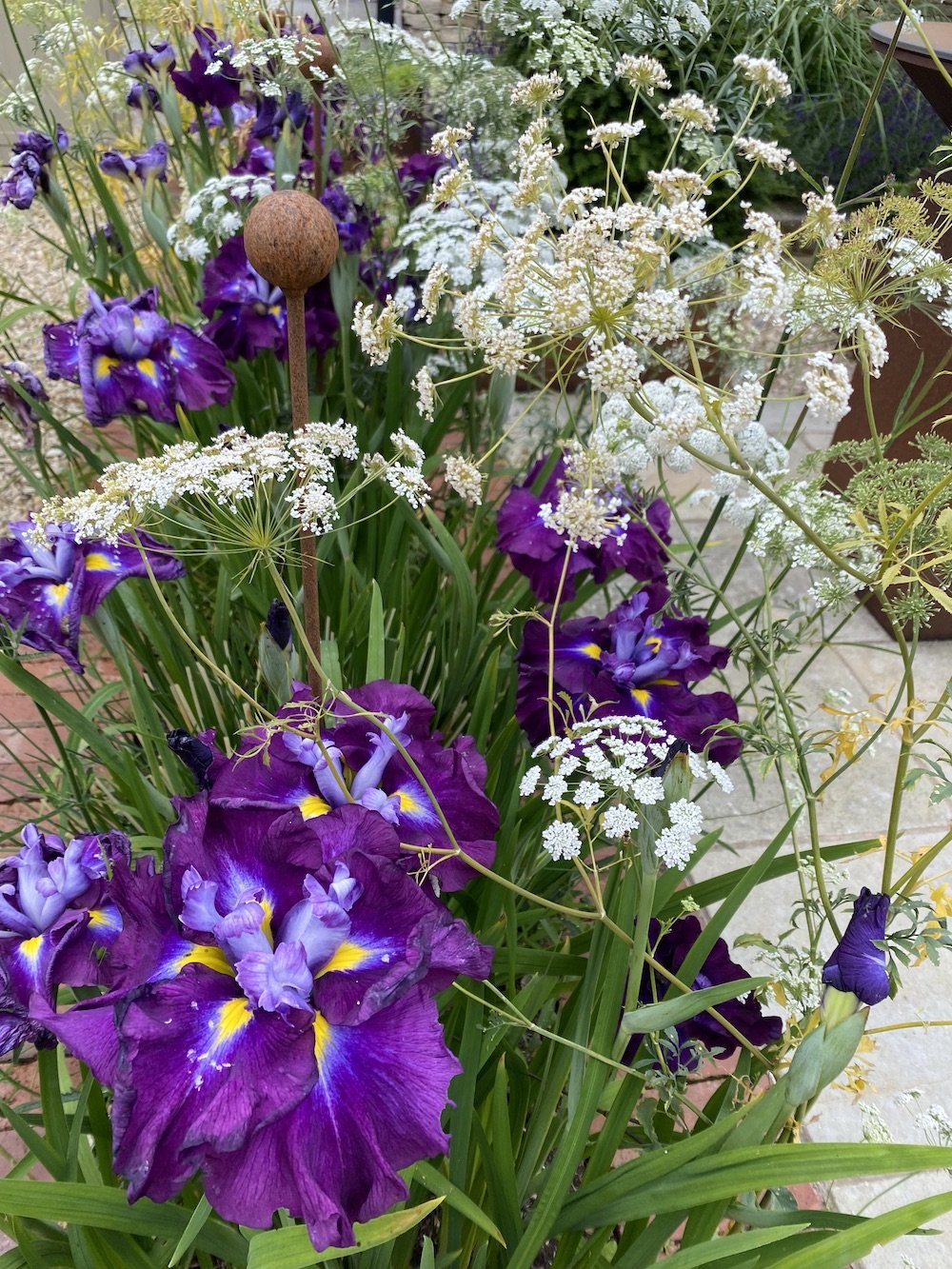
Iris Ensata in full flower with self-seeded ammi majus
In the woodland garden I have moved a few plants to get a better coverage of ferns and pachysandra in the newly planted areas. I wanted the planting to echo the white of the Betula jacquemontii stems so snowdrops and white narcissi will be succeeded by white peonies and stands of white foxgloves against the understorey of greenery. Later in the season, highlights of blue and lavender are supplied by nepetas, geraniums, thalictrum and the cerulean of Russian comfrey, Symphytum x uplandicum, which makes a wonderful plant feed – despite the smell as it matures!
I have been asked about pruning birches. Hard pruning or the removal of the crown is not recommended for birches as they do not regenerate. Raising the canopy and thinning the growth by cutting out crossing branches or those that grow at too narrow an angle to the trunk will keep the airy appearance of the tree.
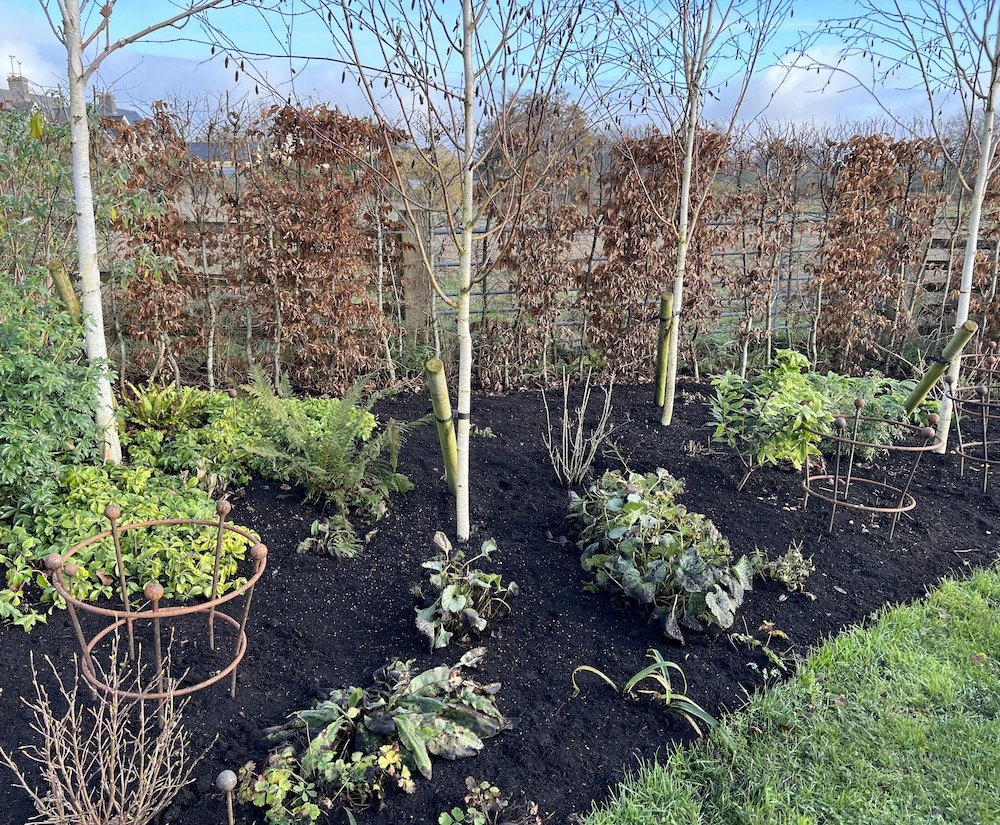
The newly planted woodland garden at the end of its first season
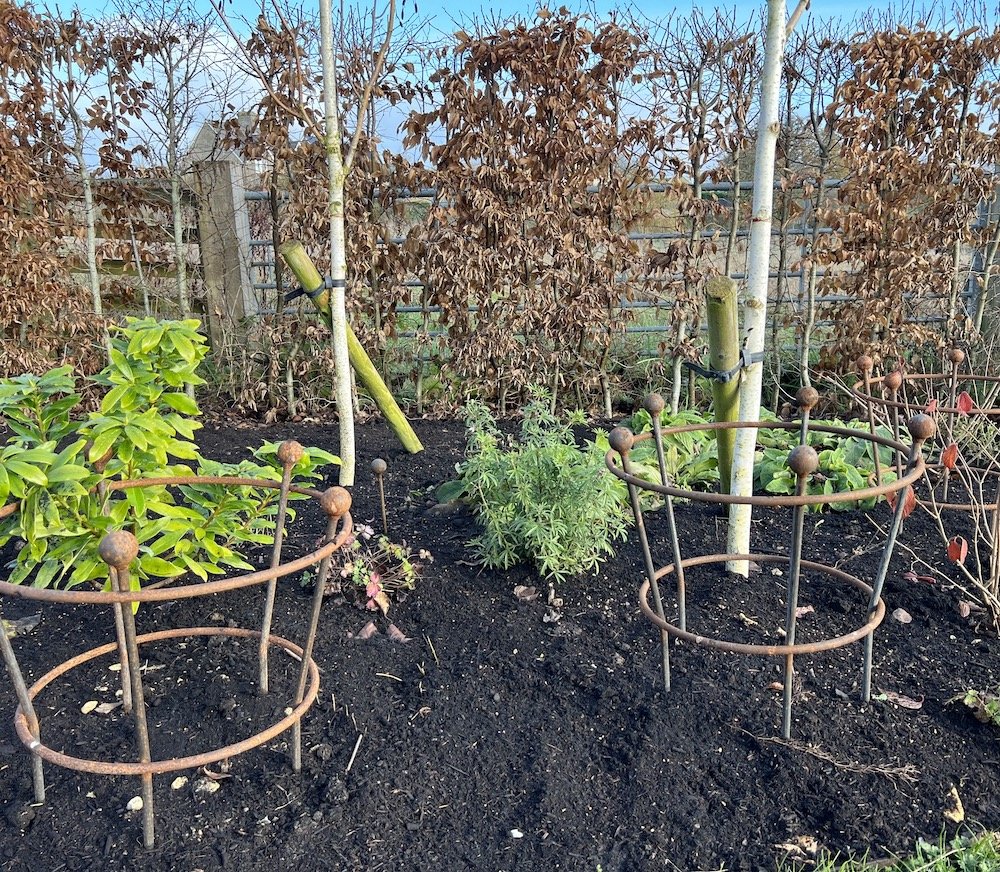
White peonies are planted in front of evergreen foliage, backed by the springtime acid green of a hornbeam hedge
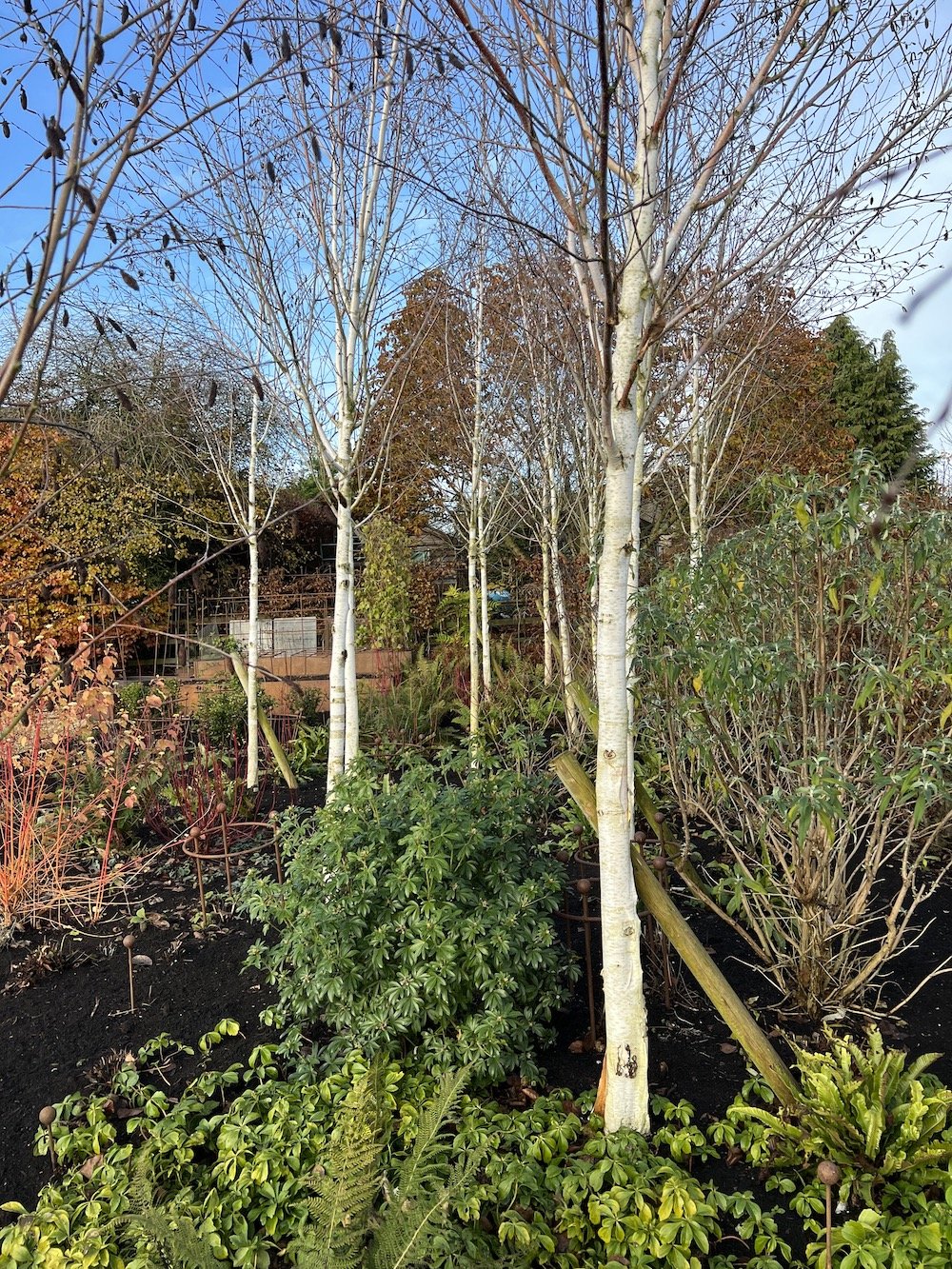
Betula jacquemontii form the backbone of the woodland bed, underplanted with pachysandra and ferns
The big herbaceous border has been rebalanced, dead-headed and mulched. Although I love euphorbias, they are thuggish when they are comfortable: they cross-pollinate promiscuously; make larger clumps each year and their offspring (quite unlike their parents in form) will fill the bed unless ruthlessly culled. I have expelled them from the large herbaceous border where peonies and hydrangeas form the backbone. This illustration highlights a few things that can never be said too often:
-
remember to put peony supports on as you plant them – the crowns are virtually invisible at this time of year
-
do think about the right sized support for the peony you are planting – you will remember I had a disaster with ‘Duchesse de Nemours’ last year when I put on a regular support instead of a tall one. You can see I have rectified this error
-
remember to mark bulbs as you plant them. This bed is full of Narcissus cyclamenus ‘Jenny’ and allium ‘Purple Rain’ and I want to avoid putting a spade into the clumps. The stakes are driven in as I plant and are quickly hidden by foliage in spring
Hydrangea quercifolia ‘Snow Queen’ gives both lovely flowers and foliage but the heavy white panicles of flowers pull the bush down and I have put a single ring support around it to stop it flopping over the peonies
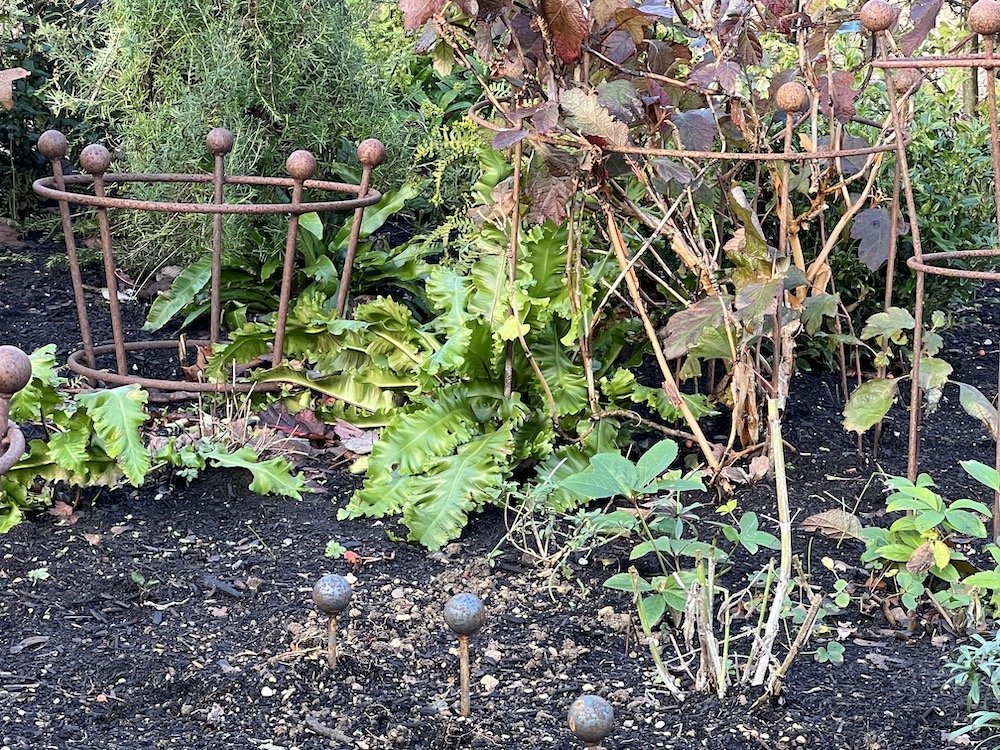
Plants in the big herbaceous border with their supports; stakes mark bulbs
In only a few weeks the year will have turned and we can anticipate the first signs of new growth. As well as enjoying each plant as it emerges, it is also a good time to make notes of what might be done in the spring to give you even more gardening pleasure in 2023.
